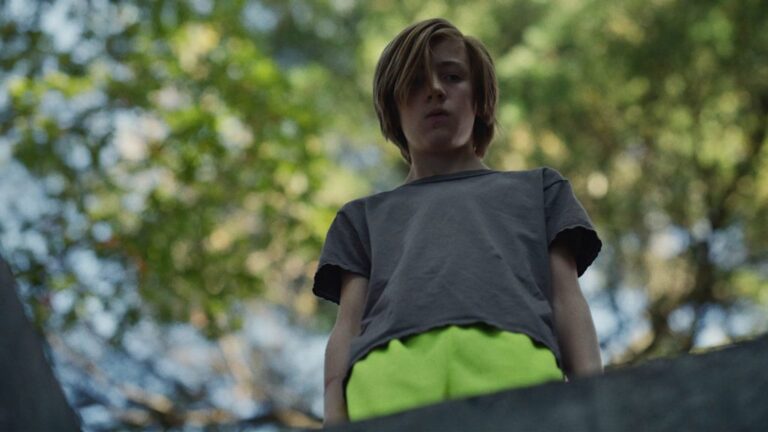Exploring Identity and Connection in The Last Black Man in San Francisco
In the vibrant tapestry of indie arthouse cinema, few films resonate as deeply as The Last Black Man in San Francisco, directed by Joe Talbot. Released in 2019, this poignant narrative serves as both a love letter to the city and a heartfelt exploration of identity, belonging, and the complexities of gentrification. The film, rooted in personal experiences, not only captures the essence of San Francisco but also poses larger questions about race and community in America.
A Beautifully Crafted Narrative
At its core, The Last Black Man in San Francisco follows Jimmie Fails, played by himself, a young man who believes he is the rightful owner of a Victorian home in the Fillmore District, a neighborhood that has drastically changed due to gentrification. The story unfolds as Jimmie and his friend Mont (Jonathan Majors) navigate the city’s shifting landscape, striving to reclaim both the house and their connection to the community that shaped their identities.
What makes this film particularly compelling is its narrative structure, which feels both intimate and expansive. The screenplay, co-written by Talbot and Fails, blends elements of memoir and fiction, allowing the audience to step into Jimmie’s world—a space filled with memories, dreams, and heartache. The film’s pacing invites viewers to linger in moments of beauty, whether it’s a sun-soaked afternoon on the streets of San Francisco or a quiet moment of reflection in Jimmie’s beloved home.
Visual Poetry
Visually, The Last Black Man in San Francisco is nothing short of breathtaking. The cinematography by Adam Newport-Berra captures the city in all its glory, showcasing its iconic landscapes and hidden gems. Each frame feels meticulously composed, transforming the city into a character in its own right. From sweeping shots of the Golden Gate Bridge to the intimate details of Jimmie’s life, the film invites viewers to appreciate the juxtaposition of beauty and loss.
The use of color and lighting enhances the emotional tone of the film. Warm hues envelop scenes of nostalgia and longing, while cooler tones punctuate moments of isolation and struggle. This careful attention to visual detail creates a rich atmosphere that draws viewers into the characters’ experiences, making their joys and sorrows profoundly relatable.

Themes of Belonging and Displacement
One of the film’s central themes is the struggle for belonging in a rapidly changing world. Jimmie’s connection to his childhood home represents more than just a physical structure; it symbolizes his roots and identity. As gentrification sweeps through the Fillmore District, Jimmie grapples with feelings of displacement, a sentiment echoed by many who have experienced the loss of community due to societal shifts.
This theme resonates particularly for Black individuals and families in urban settings, highlighting the tension between progress and preservation. The film poignantly depicts how the erasure of history can impact not just individuals but entire communities. Jimmie’s quest for his home is a metaphor for the broader search for identity and connection in a world that often prioritizes profit over people.
Powerful Performances
The performances in The Last Black Man in San Francisco are outstanding, particularly Jimmie Fails, whose portrayal of himself is both raw and authentic. His vulnerability allows audiences to connect deeply with his character’s journey. Jonathan Majors as Mont provides a perfect balance, embodying the role of a supportive friend who seeks his own identity within the changing landscape of their friendship and community.
Supporting characters, including Danny Glover (well known for his role in The Color Purple) as a nostalgic friend of Jimmie’s family, add layers to the narrative. Each character contributes to the exploration of community, history, and the complexities of race and identity. The interactions between characters are rich with nuance, revealing the deep bonds formed through shared experiences and collective memories.
Conclusion: A Must-See Indie Gem
The Last Black Man in San Francisco is more than just an indie arthouse film; it’s an experience that lingers long after the credits roll. Through its beautifully crafted narrative, stunning visuals, and powerful performances, the film captures the essence of longing, identity, and community in the face of change. It reminds us of the importance of our roots and the stories that shape us, inviting viewers to reflect on their own connections to home and belonging.
In a landscape of cinema that often overlooks these themes, The Last Black Man in San Francisco stands as a vital contribution, offering a perspective that is both personal and universally resonant. Whether you are a fan of arthouse films or simply seeking a thought-provoking story, this film deserves a place on your watchlist.
Discover more from DG Speaks
Subscribe to get the latest posts sent to your email.




